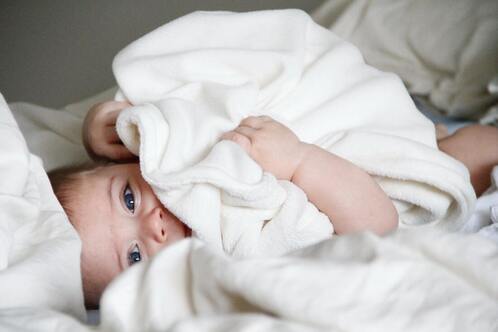|
In the age of the internet, there is a massive amount of information about baby safety. It can feel quite overwhelming, especially as a first-time parent. It’s hard to know what to relax about…and what to actually take seriously. Safe sleep, I would argue, is one topic to take seriously. Culturally speaking, many people have differing opinions on what sleep should look like. Yet the data still suggests that about 1 in 1,000 babies die from Sudden Infant Death Syndrome (SIDS) every year. And for me, that’s enough to want to know how to prevent it. So what is the safest position for your baby to sleep? According to the American Academy of Pediatrics (AAP): the safest way is on their back! Since the AAP made the “back to sleep” recommendation in 1992, the SIDS rate has decreased more than 50%. While it may be difficult to keep your baby on their back, a breathable crib mattress cover can help ease some worry. Once your baby can roll over, they are generally okay to sleep on their stomach. But still keep in mind safe sleep recommendations at all times. What also causes SIDS? Soft surfaces, loose bedding, overhearing with too many blankets, stomach sleeping on soft bedding…and of course smoking by the mother, and poor prenatal care/prematurity. Some of these factors are obvious to many, but some may not be so obvious. Especially the risk associated with loose bedding. For example, here in Sweden, many still use blankets with their babies and don’t know about “Sleep Sacks”. Sleep Sacks are widely used in the United States. A sleep sack is essentially a wearable blanket. It replaces loose blankets in the crib that can cover your baby's face and interfere with breathing. In addition to helping your baby sleep safer, it helps them sleep better, too. It's a warm blanket they cannot kick off. This ensures the baby sleeps soundly throughout the night. I am not sure why Sleep Sacks aren’t as popular in Europe. For our family, we used Sleep Sacks and didn’t allow a blanket or pillow in our daughter’s crib until she was 2 years old. Although slim, the risk of SIDS or suffocation was not worth it, in our eyes. Here are some other precautions we took:
Everything I mentioned above are all recommendations per the American Academy of Pediatrics, National Institute of Child Health and Human Development plus a task force of the U.S. Consumer Product Safety commission. Furthermore, the AAP and the US Department of Health and Human services recommend that parents room-share, but not bed share. Here is what the report advises:
While the true cause for SIDS is unknown, these recommendations can reduce your baby’s risk, prevent suffocation and give them the safest sleeping environment possible. Happy and safe sleeping! Learn more about helping your baby sleep their best with the Happy Sleeping Baby book! Learn more here. Or read more about setting up your baby's room for sleep here: Room Environment Need sleep guidance to help you figure out sleepless nights? Contact us for a free 15-minute call here. Comments are closed.
|
- ABOUT
- Books
- Sleep Services
-
Parent resources
- Awake WIndows and Naps
- Newborn Awake WIndow
- Milestones and regressions
- Understanding Baby Sounds
- Baby Sign Language
- Example Schedule - Newborn
- Example Schedule - 3 to 6 months old
- Example Schedule - 6 to 8 months old
- Example Schedule - 9 to 12 months old
- Example Schedule - 13 months+
- Example Schedule - Toddler
- Blog
- Contact


